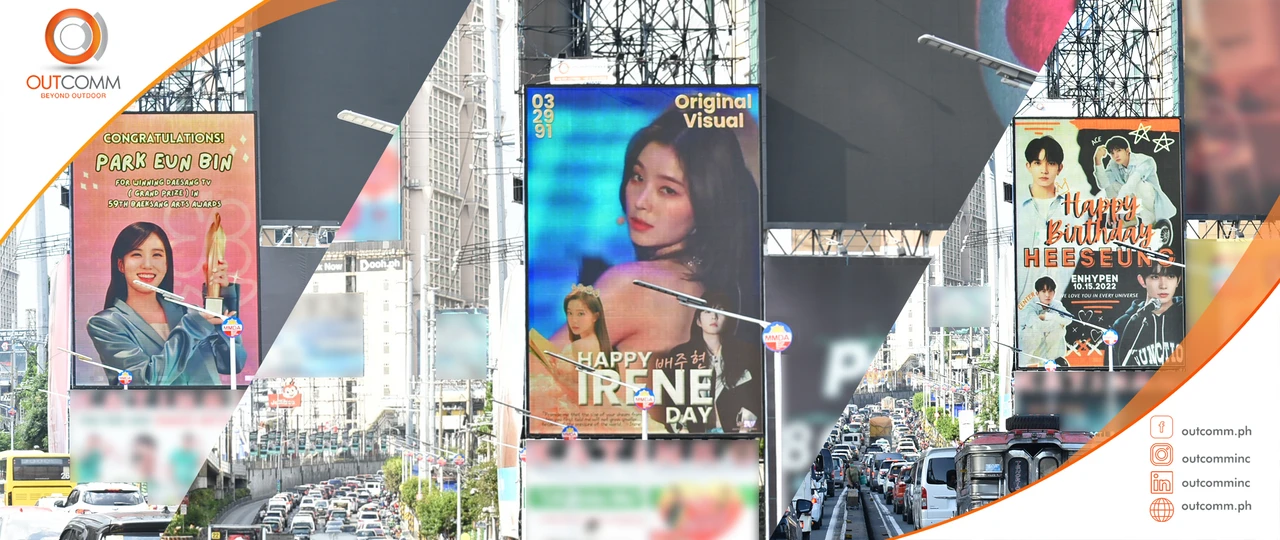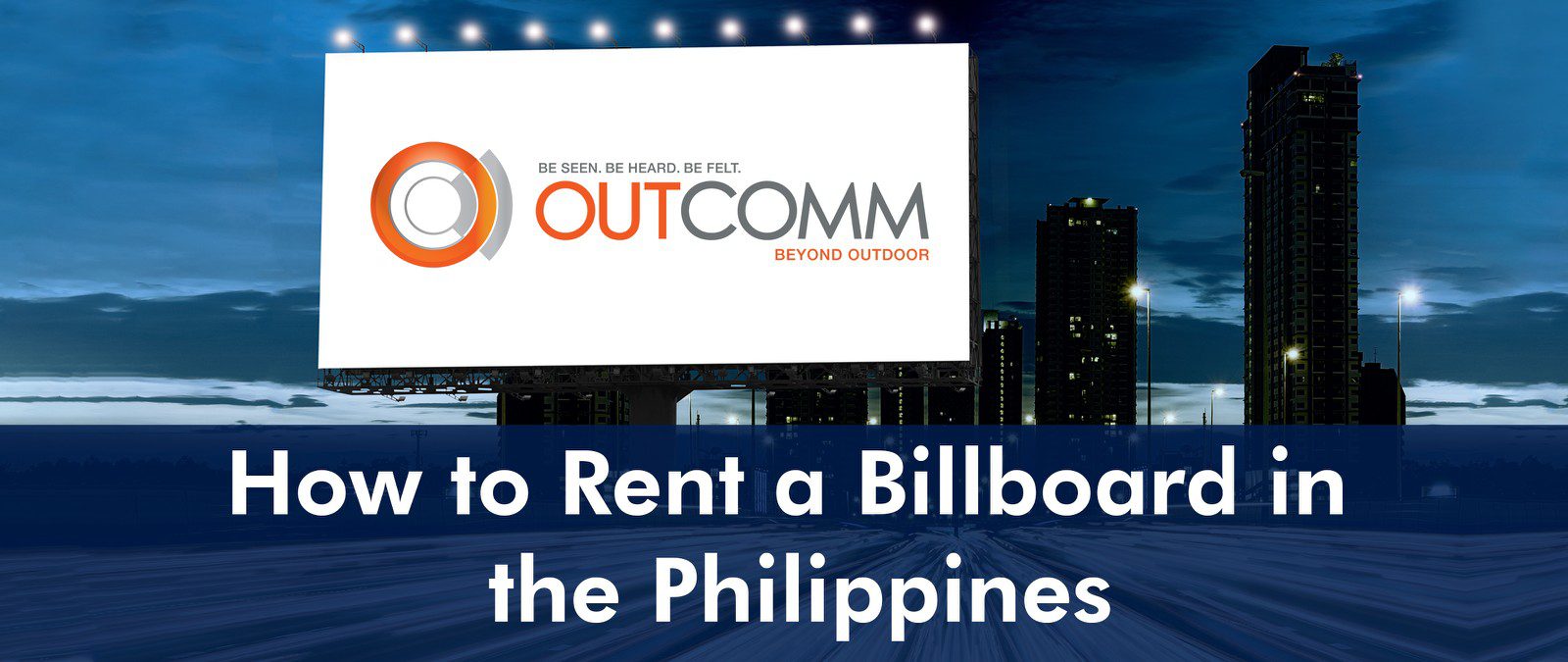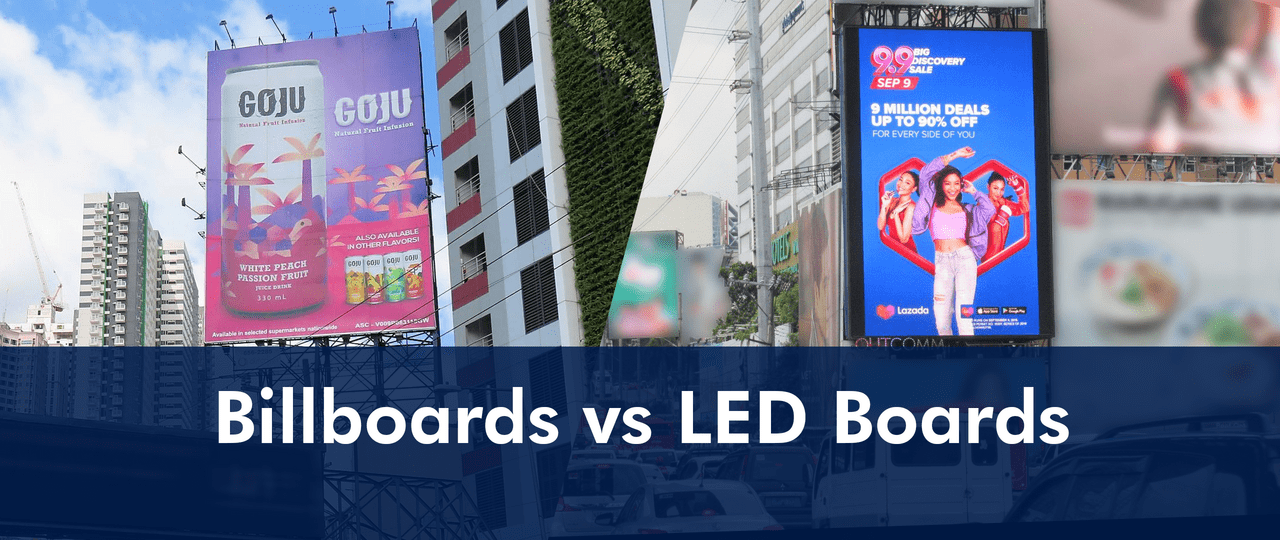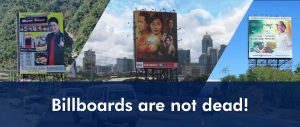The 1982 sci-fi film Blade Runner depicted a future metropolis filled with neon lights and huge billboards. However, those billboards were not the advertising displays common during the year it was released. The billboards in the movie were large digital screens occupying an entire building facade with full-motion graphics in color.
For a film released at a period when giant digital panels were still uncommon, the idea of a large digital billboard was unheard of. Fast-forward to the present day, and we can now see huge digital billboards all over the city!
Although we do not live in the high-tech world depicted in Blade Runner, the mainstream status of digital billboards proves that we are already living in the future – a world in which digital billboards have become the new norm in out-of-home (OOH) advertising.
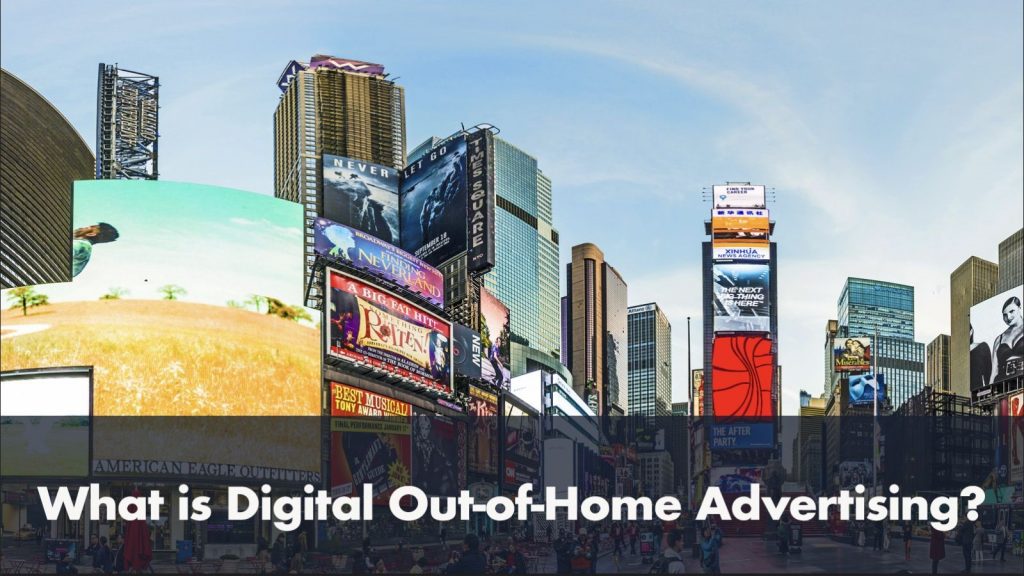
What is Digital Out-Of-Home Advertising?
Before we can define digital OOH, we must first define traditional OOH. Traditional out-of-home (OOH) advertising, also known as outdoor advertising, refers to non-digital and static advertising displays such as billboards, painted signs, sticker ads, and posters on banners.
Digital out-of-home advertising, on the other hand, refers to OOH that has been enhanced by advertising technology. Digital OOH technology incorporates geofencing, tracking, retargeting, personalization, attribution, and measurement to optimize reach.
Traditional OOH and digital OOH both serve the purpose of conveying messages and advertisements to people in public spaces, on their way to work, waiting in line, or at specific commercial locations.
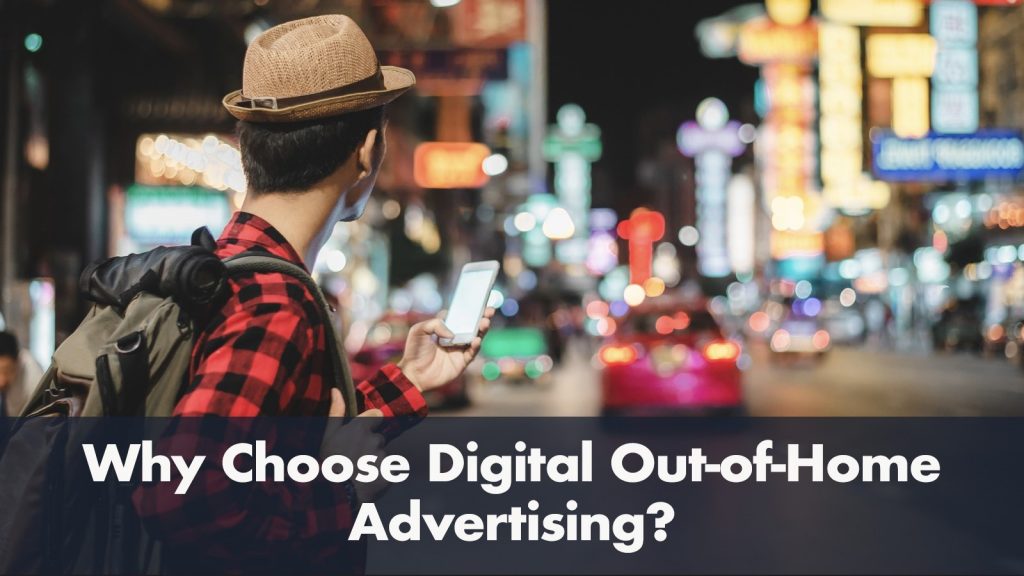
Why Choose Digital OOH Advertising?
1. Cost-Effective, Dynamic, and Flexible
Advertisers using digital OOH are able to change displays remotely. Advertisers can display several advertising materials with great flexibility.
Digital OOH also adjusts its advertising material dynamically based on external factors such as weather, traffic count, audience profile, and time of day. This functionality allows advertisers to deliver tailored advertisements in specific locations.
To take advantage of this flexibility, advertisers engage in real-time bidding to secure ad spots or timeslots during which their target audience is most likely to see their ads.
2. Connecting Outdoor to Online
Advertisements displayed via digital OOH are linked to the cloud and can be displayed on other devices online for optimum exposure. Your target demographic, for example, may see the same ad on a digital OOH display and their mobile phone at the same time.
Some digital OOH displays allow audience engagement via mobile devices. This could be accomplished by using interactive augmented reality (AR) technology or by showing QR codes on the screen.
3. Detailed Metrics and Analytics
One significant advantage of digital OOH is its ability to provide detailed analytics and ad performance. Most digital OOH panels today are outfitted with eye-tracking internet-of-things (IoT) devices that analyze the profile of the people around them.
These devices then upload the data to the cloud. Based on that data, advertisers can bid for the opportunity to have their ad displayed on the digital OOH display at a given time.
Advertisers can also use the data to plan future advertising campaigns. For example, if the IoT device detects that the audience during lunch hours is office workers, the digital OOH panel will show office workers relevant ads during lunch hours.
4. Maximizes Use of Multimedia
Because digital OOH panels are large digital screens, advertisers take full advantage of the capability of digital OOH to display advertisements in engaging video format. Dynamic content, such as videos, typically outperforms static content, especially when grabbing the attention of a crowd passing by.
A digital OOH display can show several video ads in a short period, exposing potential customers to an assortment of products that they may not be actively looking for but will remember if the ad is engaging and entertaining enough.
Newer technologies such as Augmented Reality (AR) and Holograms are significant to the development of outdoor advertising, and digital OOH makes it all possible.
5. Allows for Short-Term Advertising
Advertisers who are looking to set up a digital display for a short period of time would benefit greatly from digital OOH. They may also choose how frequently their advertisement appears on the digital display as part of their outdoor advertising strategy.
Even ordinary people can also benefit from the short-term nature of digital OOH. Such instances include sending birthday greetings and other personal messages.
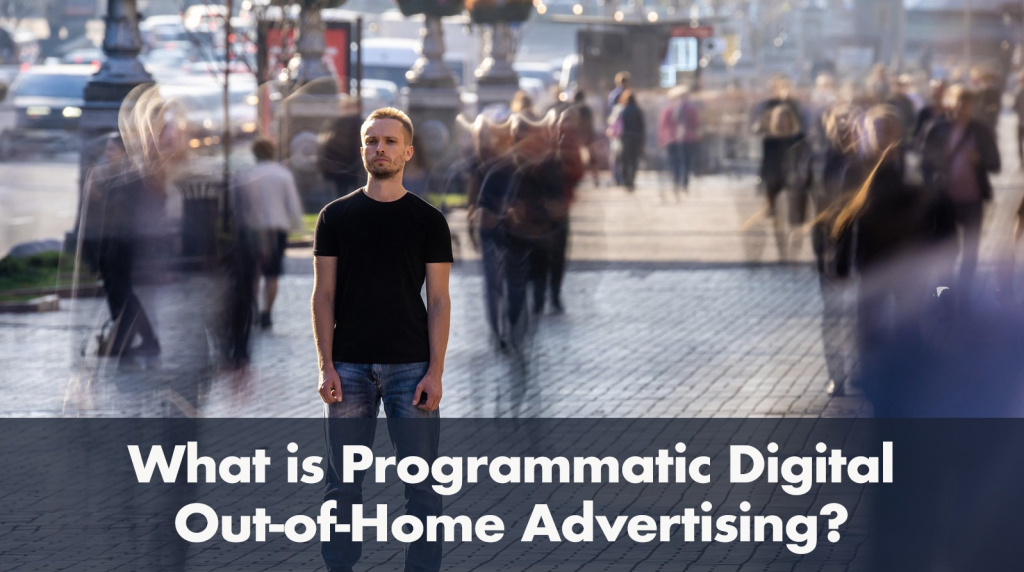
What is Programmatic Digital Out-Of-Home Advertising?
What sets digital OOH apart from traditional OOH is its ability to show the right ads to the right customer at the right time, unlike traditional advertising, which is often shown to a generic audience.
Back then, in order to get an advertisement up at a certain location, advertisers would have to contact the media company and directly negotiate the ad campaign. Thanks to data analysis software, it is now much easier to manage and adapt to customer insights.
This allows for programmatic advertising, in which a media buyer may access a network’s inventory and book spots based on the demographics of their target audience. Thus, advertisers can reach their target audience more easily.
What Media-Buying Methods Do Advertisers Use in Programmatic Digital OOH Advertising?
There are four types of media-buying methods for programmatic digital OOH advertising: Real-Time Bidding (RTB), Programmatic Direct, Programmatic Guaranteed, and Non-programmatic Guaranteed.
1. Real-Time Bidding (RTB)
Real-Time Bidding (RTB) is an auction-based bidding method in which advertisers compete for an opportunity to show ads to specific users. RTB is considered the most flexible media-buying model in the market because of its extensive use of consumer data and inventory.
2. Programmatic Direct
Programmatic Direct, as the name suggests, is a one-on-one media-buying approach similar to the traditional method in which salespeople meet with advertisers in person to negotiate a deal. In the programmatic direct method, both the advertiser and the site owner agree on a particular inventory based on predefined cost per thousand (CPM)
3. Programmatic Guaranteed
Programmatic Guaranteed, also known as a private marketplace (PMP), is an invite-only auction process in which only a few advertisers bid for the exclusive use of a site owner’s inventory. This bidding process is usually offered by site owners with a more coveted inventory.
4. Non-programmatic Guaranteed
Non-programmatic Guaranteed is a manual process that requires the most effort. Ad publishers must understand the advertiser’s needs while negotiating prices and planning the ad campaign, also known as insertion order (IO). Inventory is usually sold at a fixed CPM rate and guarantees ad spots reserved for the advertiser.
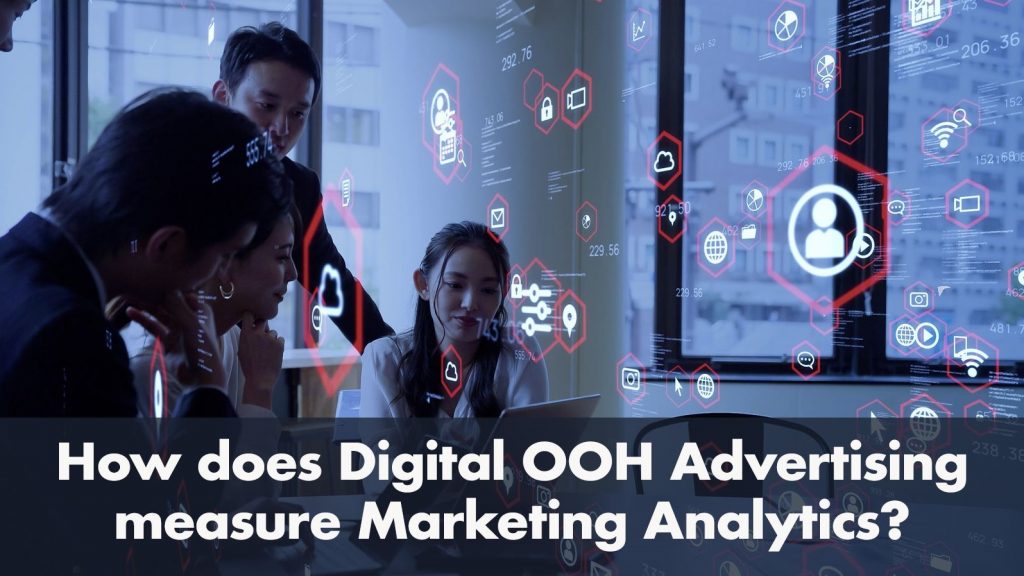
How does Digital OOH Advertising measure Marketing Analytics?
Digital OOH panels are integrated with data analytic technology. It can measure how many people have passed by the digital signage, how many people looked at it, and how long they looked at it. Storefront digital displays can even tell if a customer has visited the shop.
Measurements like these give the advertisers a couple of opportunities. First, sensors can conduct market research for brands whether the digital signage is in a fixed position or inside a public transport vehicle. Sensors and cameras can give anonymous real-time insights into results normally gathered by surveys.
Second, data analytics can give more information about the client’s target audiences. Not only does the data measuring device identify persons passing by, but it also determines who is paying attention to various types of advertisements.
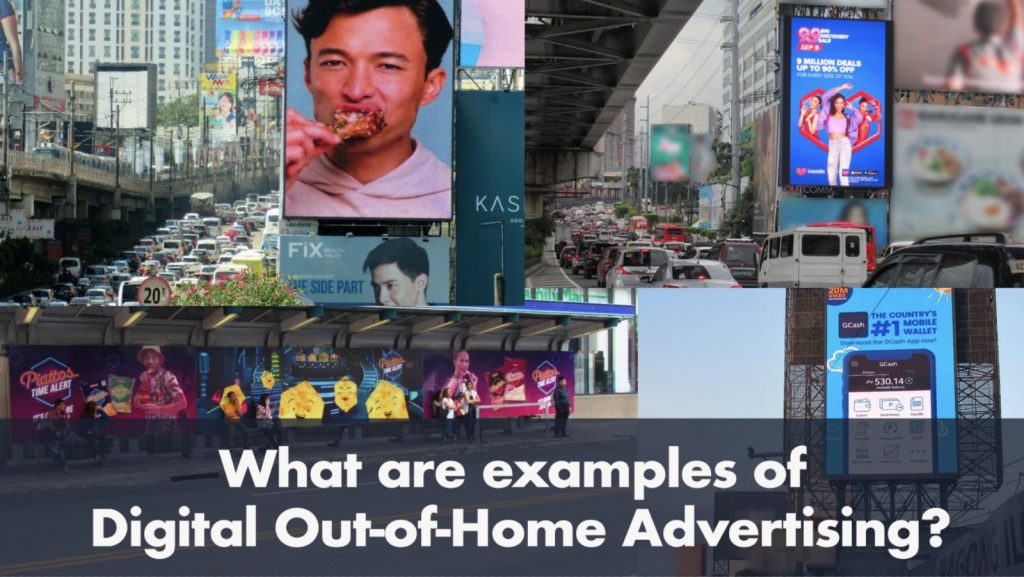
What are examples of Digital OOH Advertising?
Digital OOH media falls into two categories: place-based media and large format media.
Place-based media generally consists of small-scale digital displays that are contextually relevant to their environment. These include digital screens located in shopping malls, gyms, elevators, trains, bus sheds, and other public places. Due to its small size, this type of digital OOH allows brands to engage with their customers in various ways.
Large format media, on the other hand, are typically huge LED panels, matching the size of a true billboard. This type of digital OOH is placed along highways, inside airports and stadiums, and in major bus terminals, which are best seen by pedestrians and street-level traffic.
We Are Now In The Future
Without a doubt, we are already living in the future. Digital OOH has several great reasons to be an effective advertising medium, which is why more advertisers are now complementing their online and traditional outdoor displays with digital OOH for their advertising needs.
Whether a sale is made through automated or manual negotiations, there is always a digital OOH advertising space available for any advertiser in a location where their target audience is.
What’s next in the future of digital OOH advertising? The 2017 sequel film Blade Runner 2049 shows us that a giant pink holographic girl who you can talk to is within the realm of possibilities.
Let’s get digital!
Outcomm offers digital OOH solutions in Metro Manila, particularly in EDSA, C5 Road, McKinley Hill, and NAIA.
Call Outcomm at +63 917 537 5110 or at (02) 8856-2285 or email us at sales@outcomm.ph and start your next digital OOH ad campaign today.


